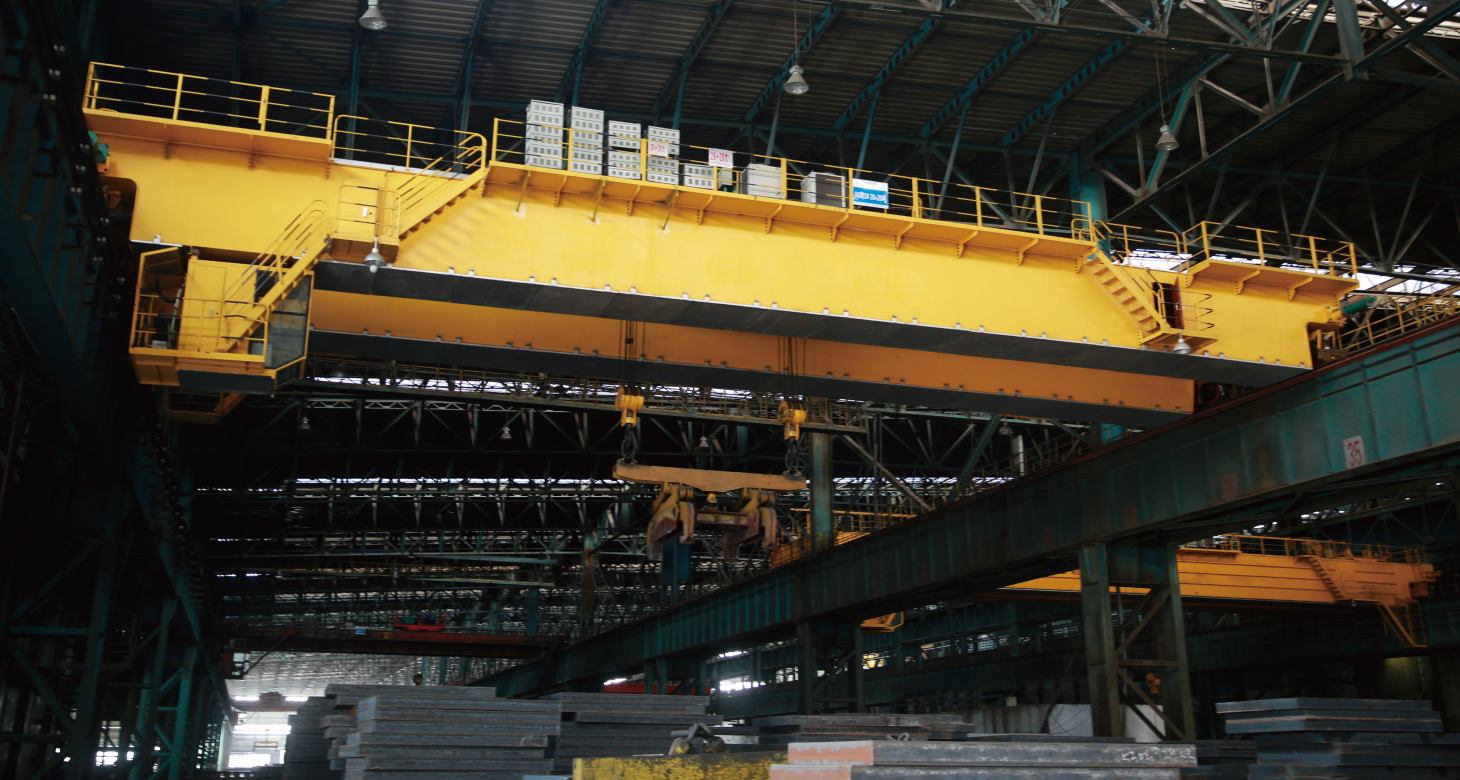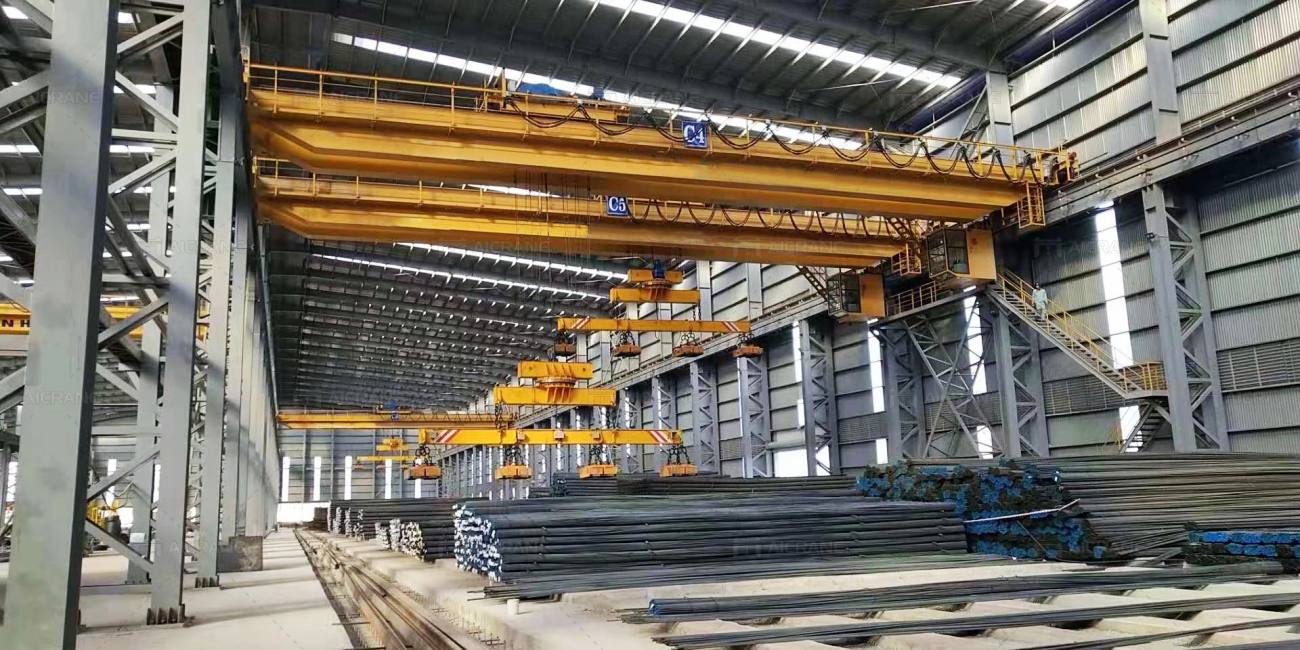In the ever-evolving world of logistics and warehousing, maximizing storage space is a critical concern for businesses aiming to optimize their operations and reduce costs. One of the most effective ways to achieve this is through the use of warehouse overhead cranes.
These cranes not only facilitate the efficient movement of goods but also significantly enhance the utilization of available storage space. This article explores how warehouse overhead cranes can maximize storage space and improve overall operational efficiency.

The Role of Overhead Cranes in Warehousing
Warehouse overhead cranes, also known as bridge cranes, consist of parallel runways with a traveling bridge spanning the gap. A hoist, the lifting component of a crane, travels along the bridge. These cranes are ideal for handling heavy loads, enabling the efficient movement of goods across large areas without the need for aisles or other obstructions.
Vertical Space Utilization
One of the most significant advantages of using overhead cranes in warehouses is their ability to maximize vertical space. Traditional storage methods often leave vast amounts of vertical space unused, but overhead cranes allow for the efficient stacking and retrieval of goods at various heights. This vertical integration ensures that warehouses can store more products within the same footprint, effectively increasing storage capacity without the need for additional floor space. Both single girder overhead crane and double girder bridge crane can be used in warehouses to lift heavy materials.
Reducing Aisle Space
In conventional warehousing setups, aisles are necessary for forklifts and other equipment to navigate and access goods. However, these aisles can consume a considerable amount of valuable floor space. Overhead cranes eliminate the need for wide aisles, as they can move goods across the warehouse from above. This reduction in aisle space allows for denser storage arrangements, further maximizing the use of available space.

Flexibility in Layout
Overhead cranes offer unparalleled flexibility in warehouse layout design. Unlike fixed conveyor systems or static storage racks, overhead cranes can adapt to various configurations and changes in storage needs. This adaptability means that warehouses can reconfigure their layouts without significant disruptions or additional costs. As storage requirements evolve, overhead cranes can be easily adjusted to accommodate new layouts, ensuring that the warehouse remains efficient and responsive to changing demands.
Improved Accessibility
Accessibility is a crucial factor in maximizing storage space. Overhead cranes provide excellent accessibility to all areas of the warehouse, including hard-to-reach spots that might be inaccessible with traditional storage methods. By ensuring that every part of the warehouse can be utilized for storage, overhead cranes help to eliminate wasted space and improve overall storage efficiency.
Enhanced Safety
Safety is a paramount concern in any warehouse operation. Overhead cranes contribute to a safer working environment by reducing the need for manual handling and the use of forklifts, which can pose significant safety risks. The precise control offered by modern overhead crane systems minimizes the risk of accidents and damage to goods, ensuring that storage space is used efficiently and safely.
Integration with Warehouse Management Systems
Modern warehouse overhead cranes can be integrated with advanced Warehouse Management Systems (WMS), further enhancing their efficiency and storage capabilities. These systems allow for real-time tracking and management of inventory, optimizing the placement and retrieval of goods. By integrating overhead cranes with WMS, warehouses can achieve a higher level of automation and coordination, ensuring that storage space is utilized to its fullest potential.
Case Study: Real-World Application
A notable example of the effectiveness of overhead cranes in maximizing storage space can be seen in the automotive industry. A major automotive parts supplier implemented overhead cranes in their distribution center to handle large, heavy components. By utilizing the vertical space and reducing the need for wide aisles, the company was able to increase their storage capacity by over 30%. Additionally, the integration of the cranes with their WMS allowed for efficient tracking and management of parts, reducing retrieval times and improving overall operational efficiency. Aicrane group offers wide range of overhead cranes used in warehouses to imporve work efficiency and space utilization.
Future Trends and Innovations
The future of warehouse overhead cranes is promising, with continuous advancements in technology driving further improvements in efficiency and storage capabilities. Innovations such as automated cranes, IoT integration, and advanced AI algorithms are set to revolutionize the way warehouses operate. Automated cranes can operate continuously without human intervention, further enhancing productivity and space utilization. IoT-enabled cranes provide real-time data and analytics, allowing for predictive maintenance and optimized performance. AI algorithms can analyze warehouse operations and suggest improvements in storage layouts and crane usage, ensuring that every inch of space is used effectively.
Warehouse overhead cranes are a powerful tool for maximizing storage space and improving operational efficiency. By leveraging vertical space, reducing aisle space, and offering flexible layout options, these cranes enable warehouses to store more goods within the same footprint. The integration with advanced management systems further enhances their capabilities, ensuring that storage operations are optimized and efficient. As technology continues to evolve, the potential for warehouse overhead cranes to revolutionize storage and logistics will only grow, making them an indispensable asset for modern warehouses.